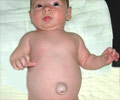
He and his colleagues evaluated activity patterns in children aged 8 to 14 who recently moved to a smart growth community called The Preserve near Chino, CA. The researchers compared them with children living in eight nearby conventional communities, matched for ethnicity and family income.
The children wore small accelerometers and global positioning system (GPS) devices to measure their activity levels and determine how much activity occurred outside the home but within the neighborhood. The devices collected and recorded information about their physical activity for seven days and determined that living in a smart growth community would add 10 minutes of activity for each child each day.
"Ten minutes of extra activity a day may not sound like much, but it adds up," said Jerrett. Taking in as little as 15 calories more than you expend on a daily basis can lead to weight gain over time, he noted. A child who weighs 100 pounds might burn an extra 30 calories in those 10 extra minutes of physical activity each day. "The basic idea is that even small things count," he said.
Previous research has found that only 42 percent of children aged 6 to11 get the recommended amount of physical activity. This drops to 8 percent for those aged 12 to 19 years, Jerrett said. In fact, younger children in the smart growth community were 62 percent more active in their neighborhood than older children. Boys were 42 percent more active in the smart neighborhood than girls, Jerrett said.
The conclusions of the study are very consistent with current thinking and research, commented Kaid Benfield, director of sustainable communities at the Natural Resources Defense Council in Washington, D.C. Smart communities are being planned and created, but existing communities can be retrofitted to be smarter and encourage more exercise, he reported.
Advertisement
TERMS OF USE: This story is protected by copyright. When reproducing any material, including interview excerpts, attribution to the Health Behavior News Service, part of the Center for Advancing Health, is required. While the information provided in this news story is from the latest peer-reviewed research, it is not intended to provide medical advice or treatment recommendations. For medical questions or concerns, please consult a health care provider.
Advertisement
Jerrett M, Almanza E, Davies M, et al.(2013) Smart growth community design and physical activity in children. Am J Prev Med.
Source-Newswise















